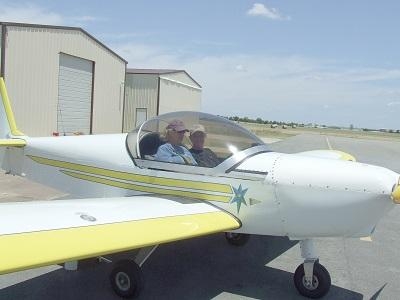Tue, Aug 19, 2014
Building Your Own Airplane And Then Learning To Fly It Would Have To Be One Of The Most Rewarding Experiences; But Can You Do It?
Building your own airplane, and then learning how to fly it, has been done, but there are a lot of considerations. The concept seems simple enough but a number of regulations place hurdles in your path. No regulation actually prevents it, but it does get complicated.

Preflight planning is important before every airplane flight. But building your own airplane, and receiving your pilot certificate in that airplane, requires the ultimate planning. First and foremost, choose an aircraft to build that has handling characteristics conducive to primary training. Second and almost equally important is to plan ahead on who would instruct you in the aircraft. The flight instructor needs to be involved right at the decision-making start of choosing the airplane.
Depending on the pilot certificate you are seeking, training regulations and the practical test standards specify certain required aircraft equipment. If you’re going for sport pilot certificate, meeting the equipment requirements is pretty easy to do. But if you are headed for a private pilot certificate, much more equipment is required for training and testing than is required for simple VFR flying.
The big catch is in the test flying phase of your experimental airplane. Phase 1 flight testing could involve as many as 40 hours of flying that include area restrictions. This test flying must be performed by a licensed pilot and, for the most part, only one person may be involved in the phase 1 fly-off. There are some exceptions to this rule but those exceptions do not include a second pilot for the purpose of primary flight instruction.
That means that someone other than the non-pilot builder will have to do the flight testing. This is obviously an important part of planning prior to starting the build process.
Once the aircraft phase 1 testing is complete and an endorsement is made in the logbook, training in the aircraft is legal. It is also legal for the flight instructor to charge for that training. There are rules that prevent an experimental airplane from being used commercially for training, but those rules do not prevent a flight instructor from charging a fee for training as long as there is no fee for the use of an experimental airplane.
Building your own airplane and receiving your pilot certificate in it is not prevented by regulations, but it’s a challenging endeavor.
(Image from file)
More News
The Industry Continues to be Rocked By Some Questionable Operations Recent investigations and a great deal of data has resulted in ANN’s SportPlane Resource Guide’s rep>[...]
Make Sure You NEVER Miss A New Story From Aero-News Network Do you ever feel like you never see posts from a certain person or page on Facebook or Instagram? Here’s how you c>[...]
Visual Approach Slope Indicator (VASI) An airport lighting facility providing vertical visual approach slope guidance to aircraft during approach to landing by radiating a directio>[...]
Airport Marking Aids Markings used on runway and taxiway surfaces to identify a specific runway, a runway threshold, a centerline, a hold line, etc. A runway should be marked in ac>[...]
Aero Linx: The Skyhawk Association The Skyhawk Association is a non-profit organization founded by former Skyhawk Pilots which is open to anyone with an affinity for the A-4 Skyhaw>[...]
 Unfortunate... ANN/SportPlane Resource Guide Adds To Cautionary Advisories
Unfortunate... ANN/SportPlane Resource Guide Adds To Cautionary Advisories ANN FAQ: Turn On Post Notifications
ANN FAQ: Turn On Post Notifications ANN's Daily Aero-Term (04.29.24): Visual Approach Slope Indicator (VASI)
ANN's Daily Aero-Term (04.29.24): Visual Approach Slope Indicator (VASI) ANN's Daily Aero-Term (04.28.24): Airport Marking Aids
ANN's Daily Aero-Term (04.28.24): Airport Marking Aids ANN's Daily Aero-Linx (04.28.24)
ANN's Daily Aero-Linx (04.28.24)



